How Lean Funders Evaluate Their Work

To highlight the current state of lean funder evaluation, this report provides an overview of the evaluation methods funders use most often.

To highlight the current state of lean funder evaluation, this report provides an overview of the evaluation methods funders use most often.
This guide lifts up various potential scenarios centered on the COVID-19 crisis, applying a racial equity lens to help inform the sector’s scenario planning efforts and future thinking.
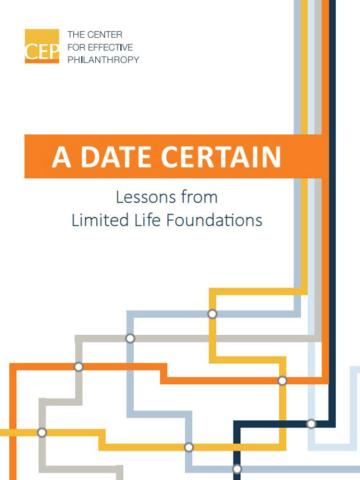
The limited life approach in philanthropy has received increased attention in recent years. But across foundations, perpetuity is often still seen to be the default, and there is considerable uncertainty about the practice of spending down.
To learn more about limited life foundations’ decisions to spend down — and the ways in which they grapple with several important issues along their journey to pursuing their goals in a finite period of time — CEP conducted in-depth interviews with leaders of 11 limited life foundations.
Resulting from these interviews, this report illustrates the ways in which limited life foundations approach spending down in nine key areas, including investing, grantmaking and strategy, and communications. The research shows that most leaders of limited life foundations choose to spend down because of the belief that it will lead to greater impact. And though these foundations’ leaders wrestle with a similar set of issues in their work, our interviews revealed that there is no one way to spend down.
Accompanying the report is a companion publication of case studies of three of the foundations featured in the report: the Lenfest Foundation, the S.D. Bechtel, Jr. Foundation, and Brainerd Foundation.
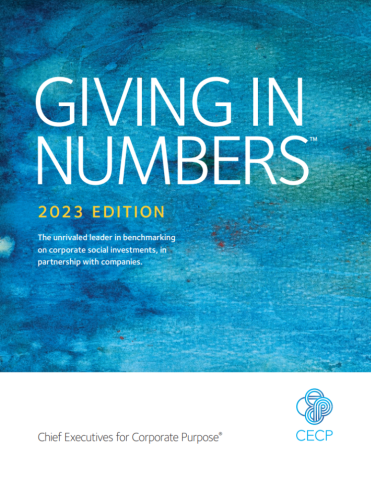
Giving in Numbers™: 2023 Edition examines 2022 trends in corporate community investments and employee engagement. Society’s expectations that companies will be a force for good both internally and externally are at an all-time high and companies’ awareness of this is reflected in the multiple acronyms they commonly use to describe their corporate purpose strategies. These include Corporate Social Responsibility (CSR), Diversity Equity Inclusion (DEI), and Environmental, Social, Governance (ESG). Many companies are meeting the challenge. Simultaneously, anti-ESG rhetoric has shifted the focus away from stakeholders and social impact departments must continually prove their programs’ value while also navigating a thorny political landscape. Moreover, last year was a time of rebuilding, with many companies and organizations revisiting their social impact strategies after the pandemic and relevant staffing changes.
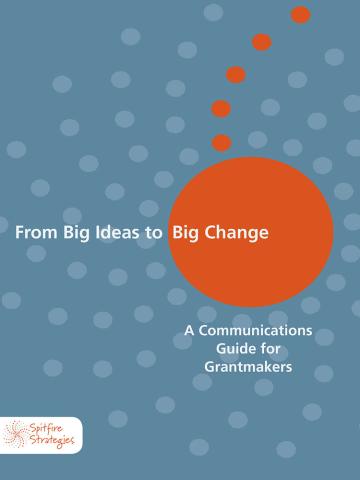
Foundations are committing more resources than ever before to communicate about their work and missions -- yet grantees continue to give funders low marks when it comes to fostering a clear understanding of what the foundation is trying to accomplish and where they fit in. To address this gap, Spitfire Strategies developed From Big Ideas to Big Change. This report examines how foundations communicate about their change strategies and offers advice for effectively engaging foundation staff, grantees, and other audiences in communications efforts that succeed in turning a vision of change into reality.
Use the report and planning tool to:
Clarify how to consistently describe your foundation's change strategy to all important audiences.
Identify central concepts of your change strategy and determine the roles the foundation, grantees, and others will play in order to communicate effectively about them.
Track communications progress at multiple levels to get feedback and make adjustments that will lead to greater impact.

This report examines 2015 through 2019 fiscal year data from 989 charities. For the tenth consecutive year, there was growth in donor-advised funds (DAFs) in every key metric. Most notably, grantmaking from DAFs to qualified charities totaled more than $25 billion in 2019, a 93 percent increase over since 2015. The same rapid growth trajectory also applies to contributions to DAFs, which totaled $38.81 billion in 2019. This represents an 80 percent increase in contributions since 2015.
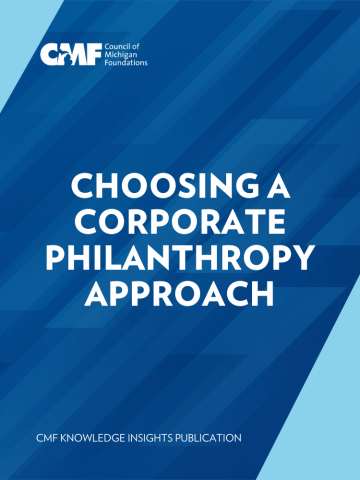
This resource provides an overview of important topics and distinctions among the three primary forms of corporate philanthropy: corporate giving programs, corporate foundations, and corporate donor-advised funds (DAFs).
A business may choose any one of these approaches to its philanthropy or use a combination of these structures to achieve its goals. This information is provided by Ask CMF – a technical assistance service of the Council of Michigan Foundations – for educational purposes only and does not constitute legal advice.
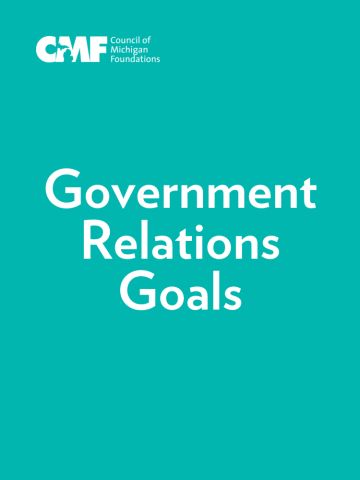
The purpose of the Government Relations Public Policy Committee of the Council of Michigan Foundations is to seek support for legislative and regulatory changes at both the state and national levels that will help to strengthen, promote and increase foundation and corporate philanthropy. This document outlines CMF's government relations goals.
In a white paper published by the Michigan Economic Center at Prima Civitas, Foundation Director John Austin defines Michigan’s “Blue Economy” and estimates the economic impact of water-based economic activity at nearly one million jobs and $60 billion annually.
The paper was commissioned by the Governor’s Office of the Great Lakes as part of the development of an overall state water strategy, and as a baseline report to launch the “Growing Michigan’s Blue Economy” Initiative. The initiative is designed to accelerate the growth of Michigan’s water-based economy. The Michigan Economic Center and Grand Valley State University Annis Water Resources Institute are leading the initiative with support from a C.S. Mott Foundation grant.
Austin defines the “Blue Economy” as the ways Michigan’s natural water assets, emerging water education and research centers, and technology-based businesses provide jobs and economic development benefits.
To help nonprofits in the area of program evaluation technology, Idealware has researched and written the report, Understanding Software for Program Evaluation. This handy reference guide provides overviews of the types of software that, when brought together, can enable your organization to accurately and confidently collect, measure, and monitor the outcomes and effectiveness of its programs.